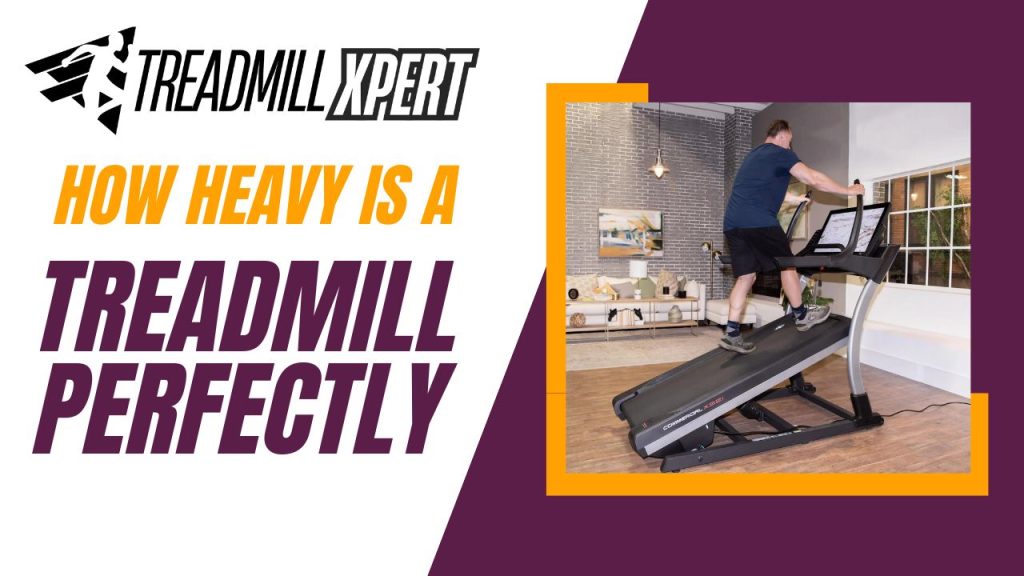How Heavy is a Treadmill Perfectly?
When choosing the right treadmill for your home or gym, one important yet often overlooked factor is treadmill weight. So, how heavy is a treadmill perfectly? The answer depends on its type, build quality, motor power, and intended use. Whether you’re setting up a home gym or buying equipment for a commercial fitness center, understanding treadmill weight is essential for safety, stability, and performance.
Let’s dive deep into the different treadmill weight categories and how they influence your workout experience.
Average Treadmill Weight by Type
Treadmills come in a variety of sizes and categories. Each type has a unique weight range:
🏠 1. Home-Use Treadmills
These are designed for casual use and can be moved and stored easily. They generally fall into the following categories:
-
Folding Treadmills: Lightweight and compact
➤ Weight Range: 100–150 lbs
➤ Ideal for: Small spaces, light walking, and portability -
Entry-Level Models: Slightly sturdier with basic features
➤ Weight Range: 150–200 lbs -
Mid-Range Models: A balance between features and portability
➤ Weight Range: 200–250 lbs -
High-End Home Treadmills: Durable with strong motors and features
➤ Weight Range: 250–350 lbs
✅ Perfect treadmill weight for home use: 200–300 lbs — stable enough for jogging yet portable for home storage.
🏋️♂️ 2. Commercial Treadmills
Built for durability, these are ideal for gyms and high-traffic environments:
-
Light Commercial: Can be used both in homes and gyms
➤ Weight Range: 250–400 lbs -
Standard Commercial: Heavier and designed for long-term use
➤ Weight Range: 350–500 lbs -
Heavy-Duty Commercial: Built for intense, high-speed workouts or athletic training
➤ Weight Range: 500–700 lbs
✅ Perfect treadmill weight for gyms: 350–500 lbs — highly durable and stable under heavy usage.
🧑⚕️ 3. Specialty and Manual Treadmills
These models serve unique purposes and tend to be lighter or heavier depending on design:
-
Manual Treadmills: No motor, low-powered, cost-effective
➤ Weight Range: 90–150 lbs -
Sprint Trainers / High-Speed Models: Advanced performance and resistance
➤ Weight Range: 375–700 lbs -
Medical Rehab Treadmills: Supportive, patient-specific equipment
➤ Weight Range: 250–400 lbs
Why Treadmill Weight Matters
The weight of a treadmill affects more than just moving it—it plays a crucial role in performance, safety, and lifespan.
✔️ 1. Stability
Heavier treadmills are more stable during workouts. They’re less likely to rock, especially when running at high speeds or inclines.
✔️ 2. Durability
A heavier treadmill usually uses higher-grade components, which means it can endure more intense or frequent use without wear and tear.
✔️ 3. Motor Power
Larger treadmills often house more powerful motors, enabling better speed, incline, and resistance features.
✔️ 4. Noise & Vibration
Heavier models absorb impact better, resulting in quieter workouts and less vibration, especially on upper floors.
✔️ 5. Safety
More weight = less tipping risk. A stable frame reduces injuries, especially when used without holding the handrails — a recommended technique for improving posture and glute activation.
Key Features That Affect Treadmill Weight
When considering how heavy a treadmill should be, it’s essential to look at the components:
-
Motor Size: Bigger motors (3.0–4.0 HP) add weight but provide smoother, more powerful workouts.
-
Belt Size: Larger, cushioned belts increase the surface area and add pounds.
-
Deck Thickness: Thick decks improve shock absorption but increase weight.
-
Frame Material: Steel frames are durable and heavy; aluminum is lighter but less stable.
-
Added Features: Touchscreens, fans, speakers, or incline trainers all contribute to added bulk.
Treadmill Brand Weight Comparison
Here’s a helpful breakdown of popular treadmill brands and their approximate weight ranges:
| Brand | Folding Models | Home Models | Commercial Models |
|---|---|---|---|
| NordicTrack | 100–150 lbs | 250–350 lbs | 350–500 lbs |
| ProForm | 150 lbs | 200–300 lbs | 300–500 lbs |
| Sole Fitness | 150–200 lbs | 250–350 lbs | 300–400 lbs |
| Horizon Fitness | 150–180 lbs | 200–300 lbs | 300–400 lbs |
| BowFlex | 175–225 lbs | 250–350 lbs | N/A |
| Lifespan Fitness | 200–250 lbs | 300–400 lbs | 400–600 lbs |
💡 Note: Always check the treadmill’s user manual for accurate weight details before moving or assembling.
Choosing the Perfect Treadmill Weight: Key Takeaways
So, how heavy is a treadmill perfectly? It depends on your usage:
-
🏡 For home users, a 200–300 lb treadmill is ideal—stable, quiet, and functional without being impossible to move.
-
🏋️ For gyms and athletic use, 350–500+ lbs treadmills offer performance, durability, and premium features.
-
💼 For light office or casual use, folding treadmills under 150 lbs make setup and storage a breeze.
Don’t choose based on weight alone. Consider the motor strength, deck size, safety features, and available space.
Final Words
A treadmill’s weight reflects its build quality and purpose. The heavier the treadmill, the more robust and stable it tends to be—but that also means less portability. If your workouts involve just light jogging or walking, especially without holding handrails (which activates more core and glute muscles), then a lighter model may suit you.
But for runners or high-intensity users, go for a treadmill with a solid build that weighs more and delivers reliability, safety, and performance.


